
CSU Meets Africa: A service-learning experience in Qwaqwa, South Africa
The students’ community service activities tie to academic concepts of art history and art education
by Beth Etter
Qwaqwa, South Africa is a mountainous and dry region with little arable land and little natural vegetation. It’s a difficult place to farm, but it’s aridity doesn’t mean the area is lifeless. This former Bantustan territory (a black homeland or black state) is home to approximately 1.8 million South Sotho people, some of whom are from the Batlôkwa ba Mota culture.
And it is the art and identity of this particular culture that assistant professor of art history Dave Riep has studied since 2002.

In 2000, Riep traveled to Qwaqwa for a friend’s wedding. Struck by both the people and the place, Riep stayed for two years, helping a NGO for the homeless and disabled. During that time, he became deeply interested in the Batlôkwa art, culture, and identity. Over eleven years, he spent five years in the area, learning the culture and customs and studying the art forms. They became the subject matter of his master’s degree and doctoral dissertation.
“My research largely focuses on the notion of art and identity, and how the visual arts are used to promote personal, social, or cultural identity,” says Riep. “I suggest that material culture can express group identity, as it forms a repeated code of “cultural symbols.” These visual aspects can be used to form a single style or a large design field that can be recognized by cultural “outsiders,” and helps contribute to local constructions of identity.”
For example, only the Batlôkwa make a type of square-beaded garment called a sicobosho. Thus, when another Southern Sotho-speaking person sees it, they know that the wearer is Batlôkwa. (This square beaded garment is an example of a unique object-type – the square-beaded garment.)
On the other hand, all Southern Sotho-speaking peoples create a beaded waist skirt called a thethana. However, only the Batlôkwa decorate it with primary-colored beads arranged in a specific pattern. (This is an example of the unique details of a shared object-type – the beaded waist skirt.)
Riep’s dissertation was a 700-page anthology/catalog raisonne for South Sotho art and history, and included research on more than 1,500 objects from approximately 15 southern African museums and extensive interviews with South Sotho artists, cultural and community leaders, and oral historians. It was the first to document extensively the art and culture of these particular people.
Because of the relationships Riep developed with the South Sotho people and the time and information they shared with him, Riep and art education professor Patrick Fahey developed a service-learning study abroad experience for art and art education students called CSU Meets Africa.
First launched in summer 2015, the second trip occurred in May-June 2017.
“A lot of this trip is about relationship building and giving back to the communities. I wanted to do something for all the people that helped me write my dissertation and get me where I am today,” says Riep.
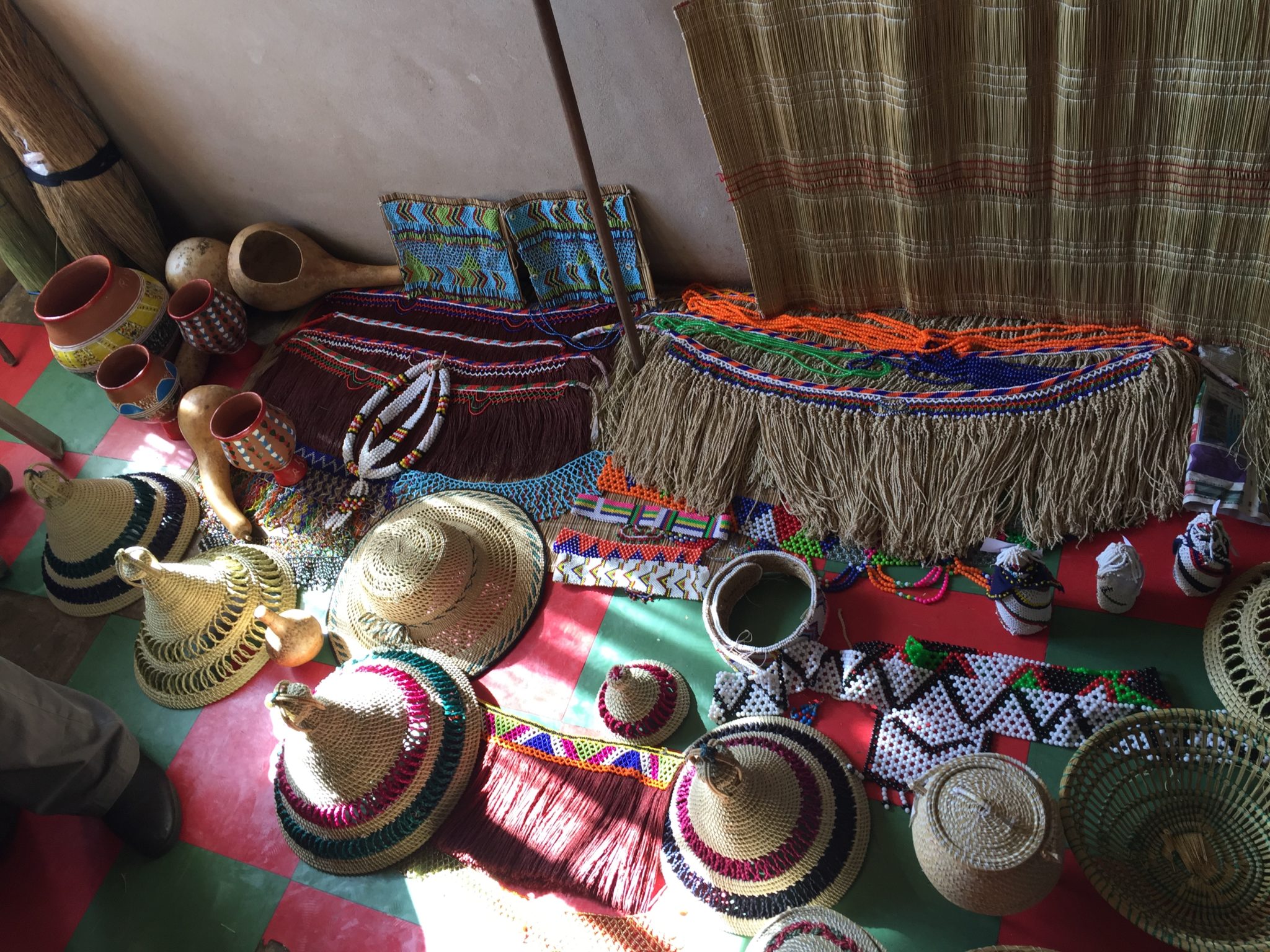
The service-learning experience
For four weeks in country, 12 students studied the artistic methods and techniques of the local people. They worked with and learned from South African visual artists, taught art to elementary and middle school students at 14 schools throughout the region, and cleaned up a vandalized museum site.
“At almost every school we went to, the students had never used some of the art materials we brought. It was cool to see how that impacted them, how excited they were,” said Angela Natrasevschi, a senior double majoring in fine arts (painting) and arts education.
Natrasevschi was the videographer for the trip and is compiling content for a YouTube channel and photo gallery to “get a more grounded perspective of what we did,” she says.
“As the videographer for the group, it was good to document the interviews with these artists,” she says. “The potter we visited is 87 and has no apprentice. Since no one is doing that work, some of what she’s doing will be lost. It’s cool we were able to document that.” Other artists they visited with and learned from paint murals or do beadwork.
Many of the elders of this area do not speak English. And while the young people do speak English, they are not as interested in carrying on their artistic traditions.
“The people around college age are in struggle with traditional art forms and being more globalized,” says Jenna Lewis (’16), Colorado high school art teacher and two-time trip participant.
While the CSU students are learning about cultural context [looking at a person’s beliefs, values, and practices as understood based on that person’s own culture, rather than judged against the criteria of another], art production, and educational techniques, they are also learning about inequity and disparity. “It’s an immensely impoverished region – with 88% unemployment – and it puts perspective on our life here,” says Riep.
The students agreed. “It was so different [from the U.S.], especially working in these poor communities with people living in shacks and who have absolutely nothing,” says Anna Berman, a junior majoring in graphic design.
In fact, many of the schools in this region of South Africa don’t have an arts program, or at least the materials to make an arts program as we know it in the U.S. so the CSU students and their materials were warmly received.
This included a visit to a school for deaf and blind children. “It turned out to be the school with the best facilities,” says Riep. “Students of different degrees of ability were doing amazing things.” The students there were learning welding, cooking, baking, and hospitality.
“Art is universal,” says Natrasevschi. “We could communicate even through a language barrier.”
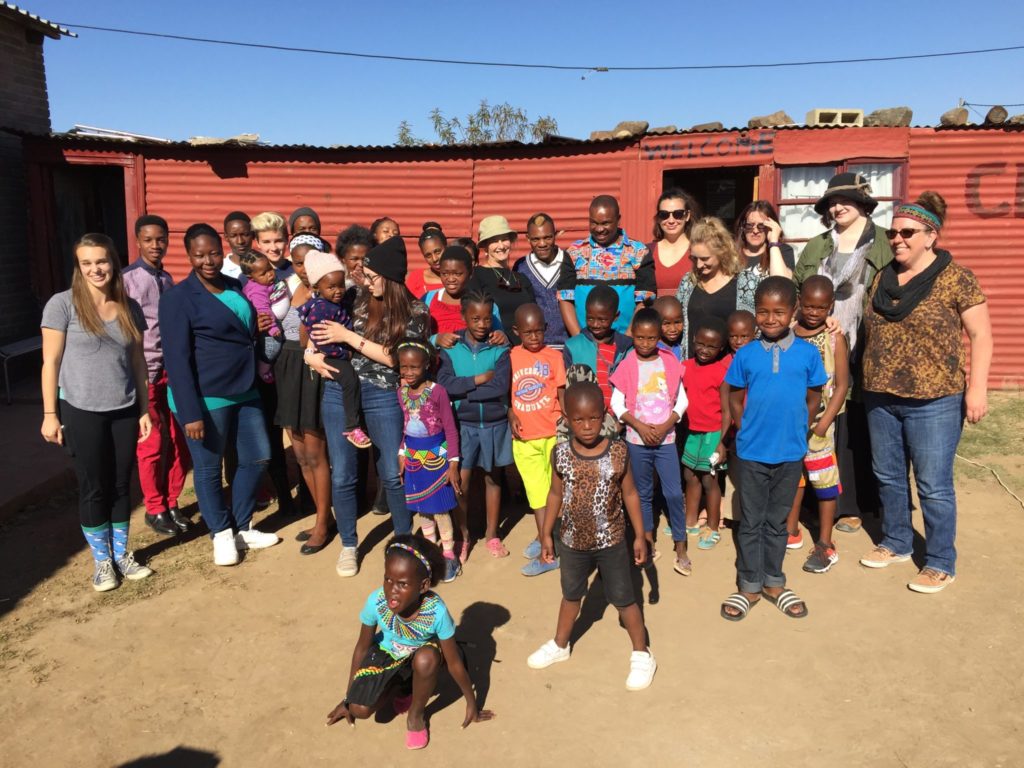
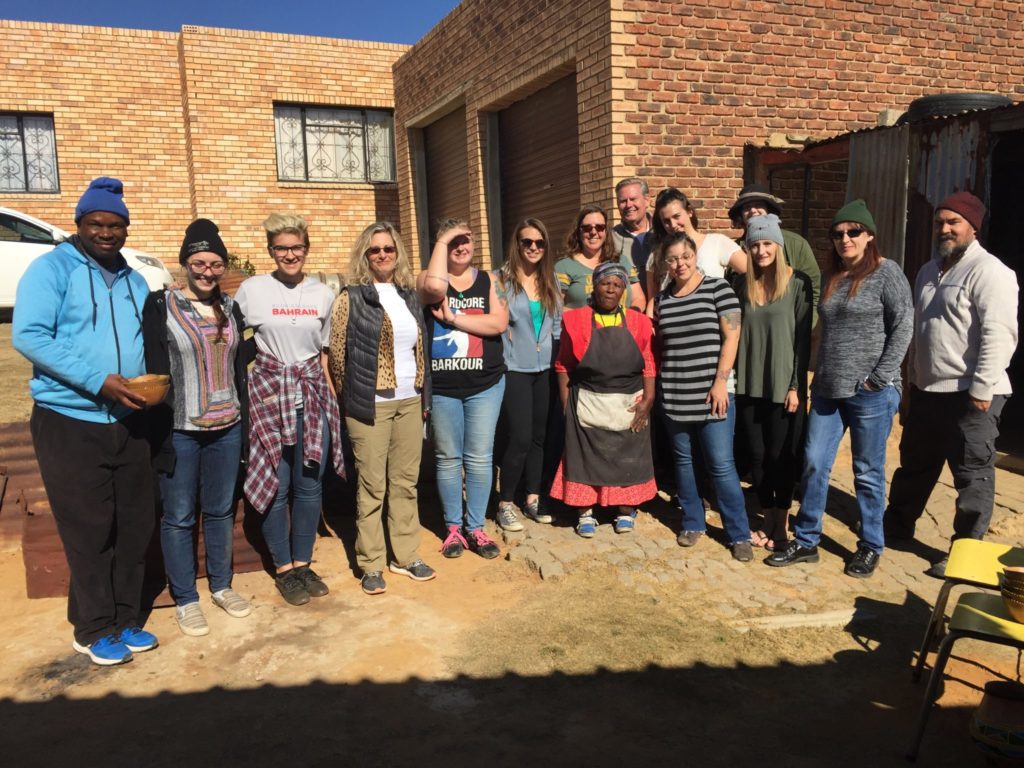
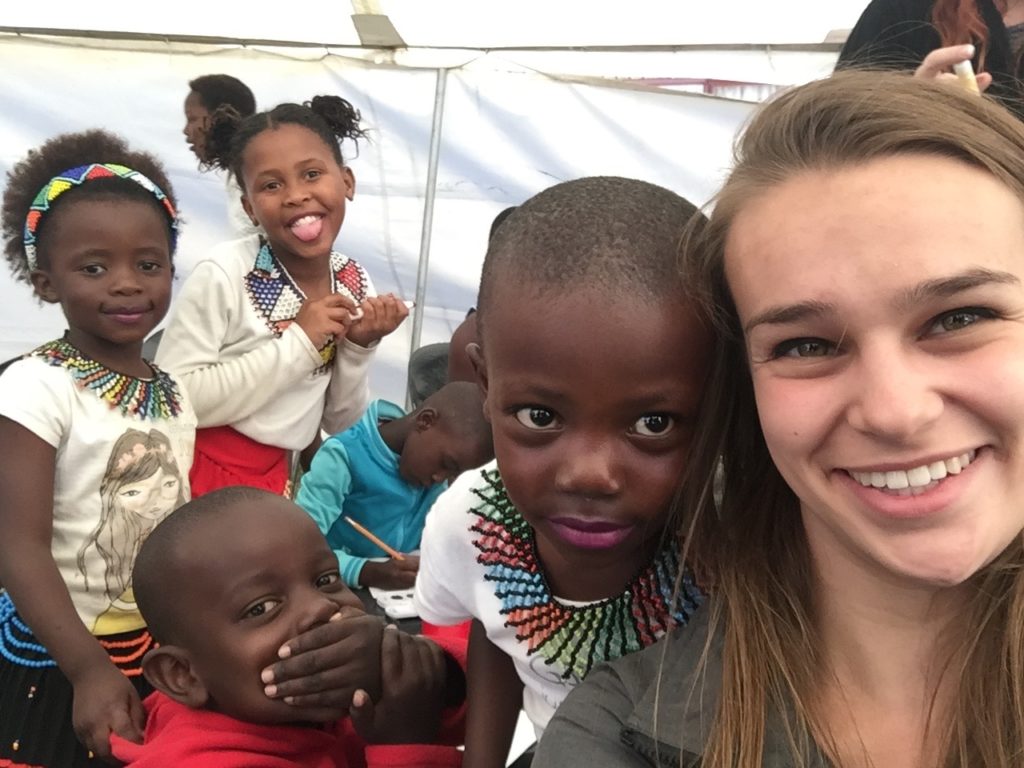
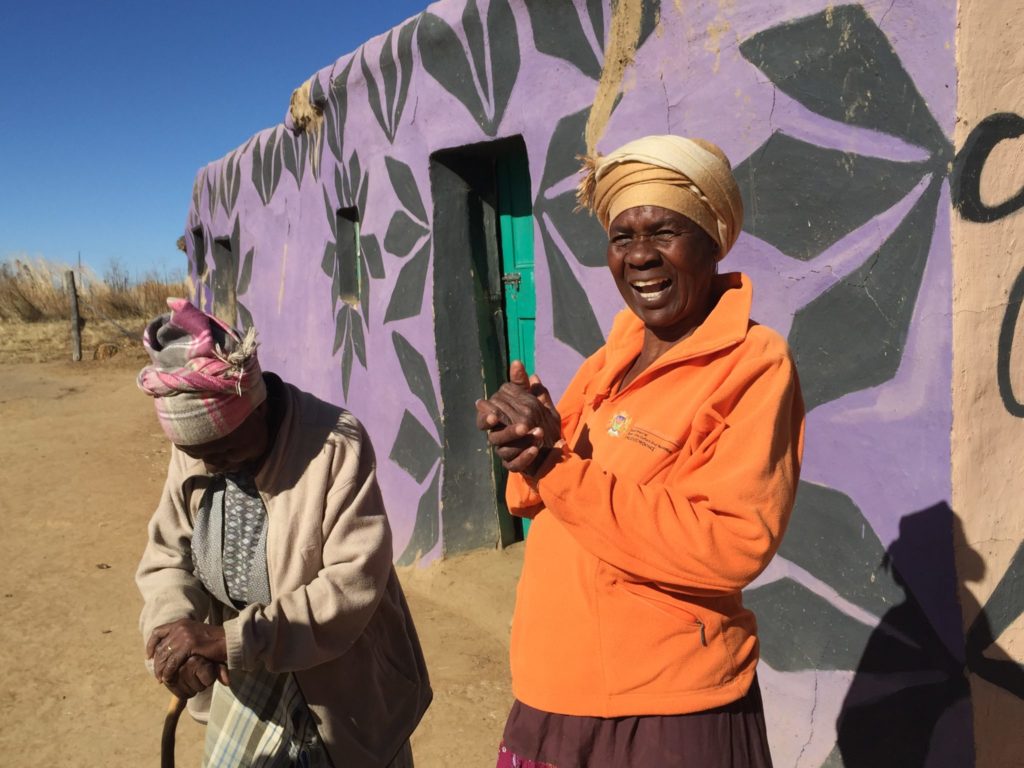
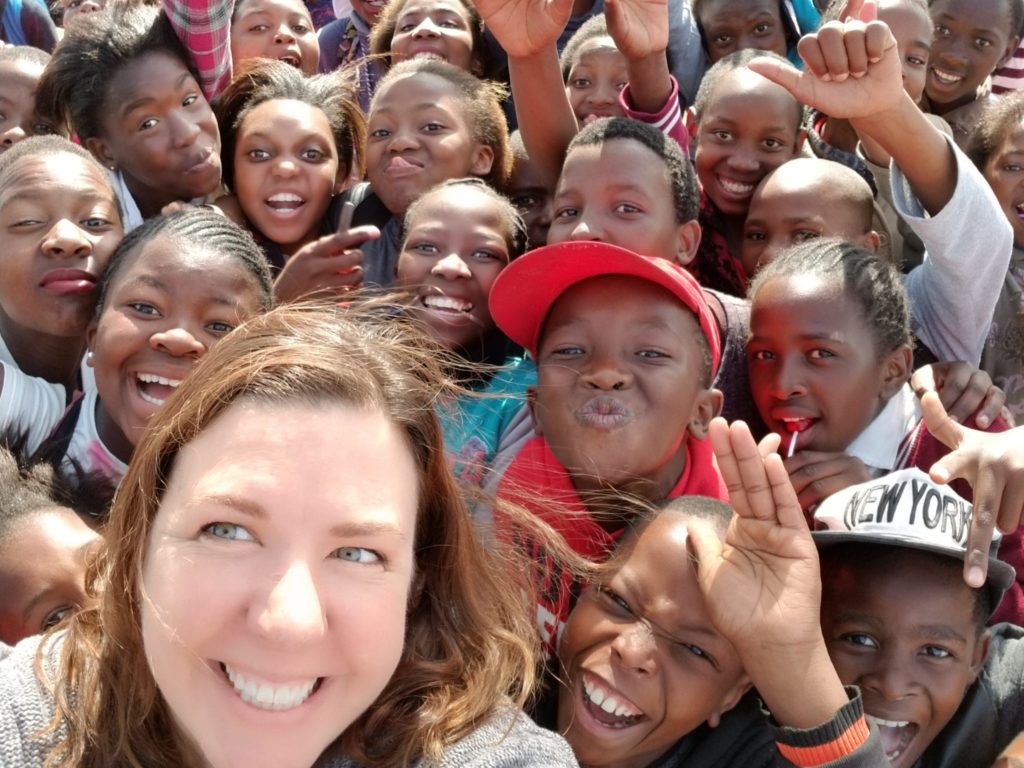

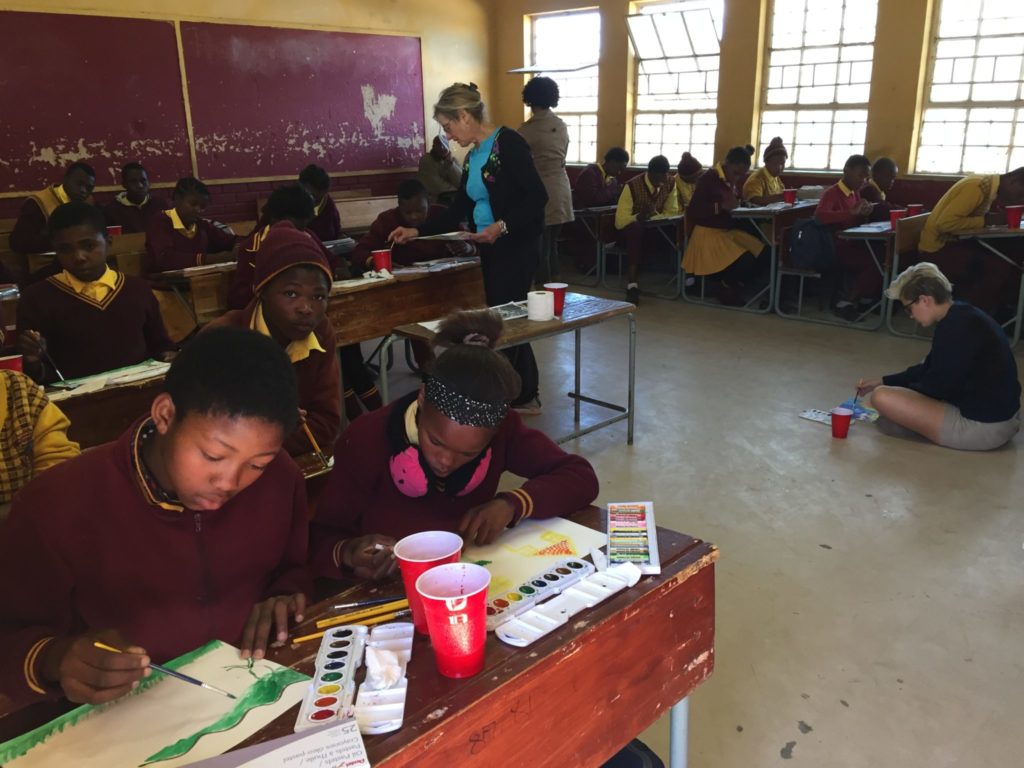
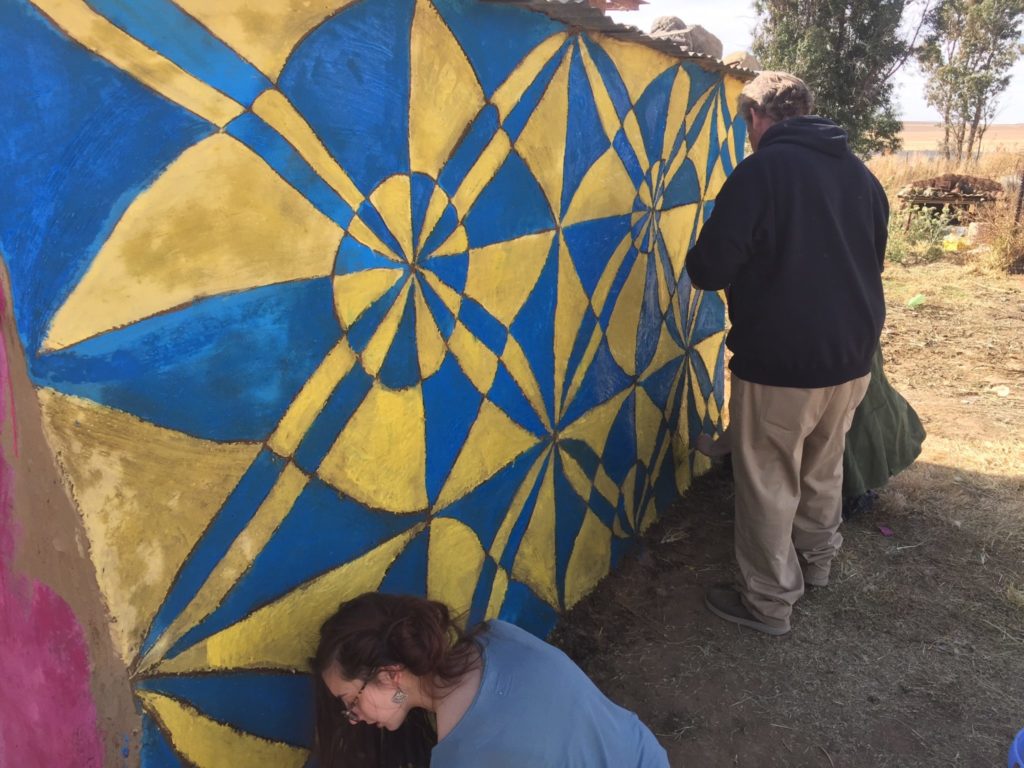
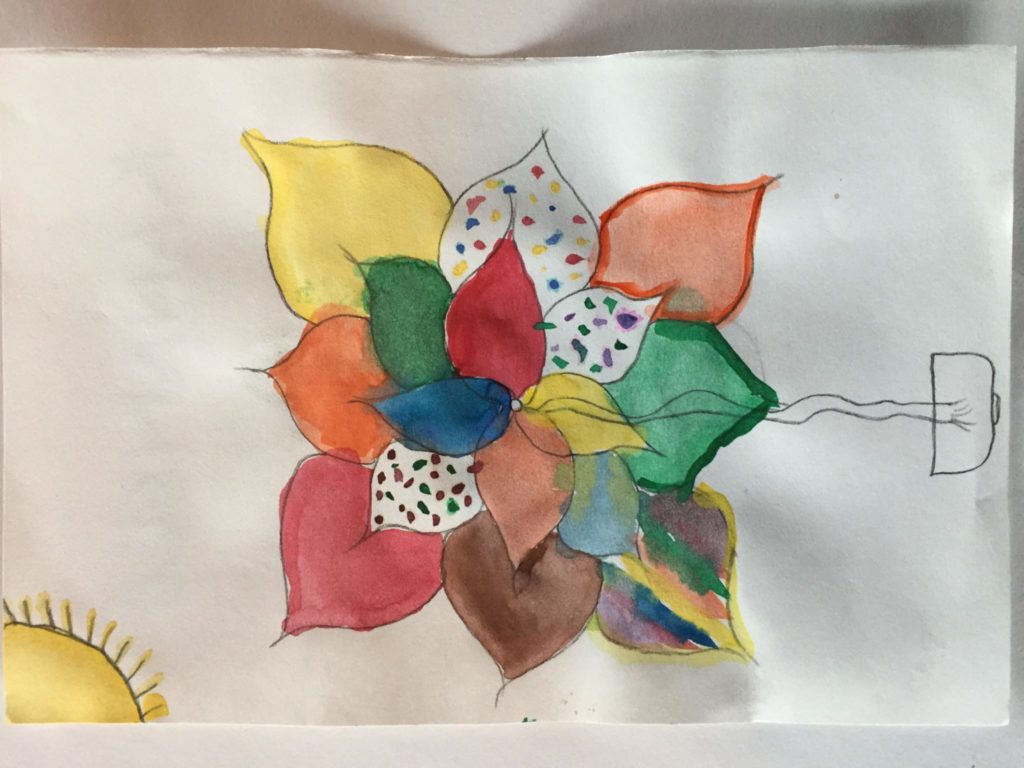
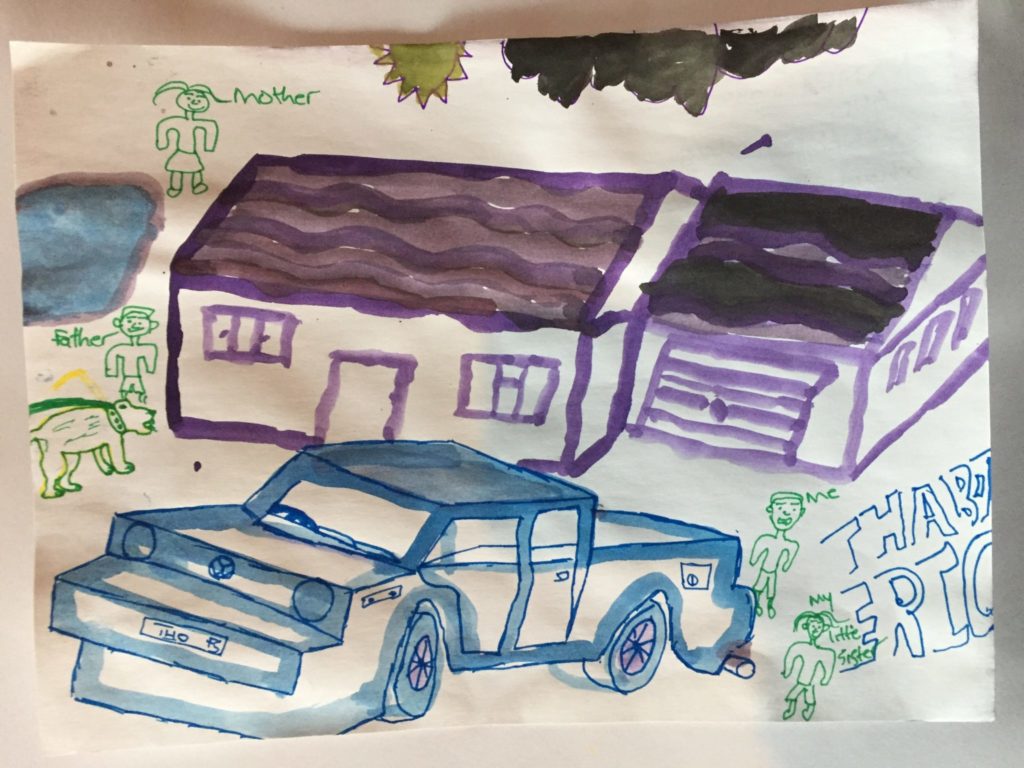
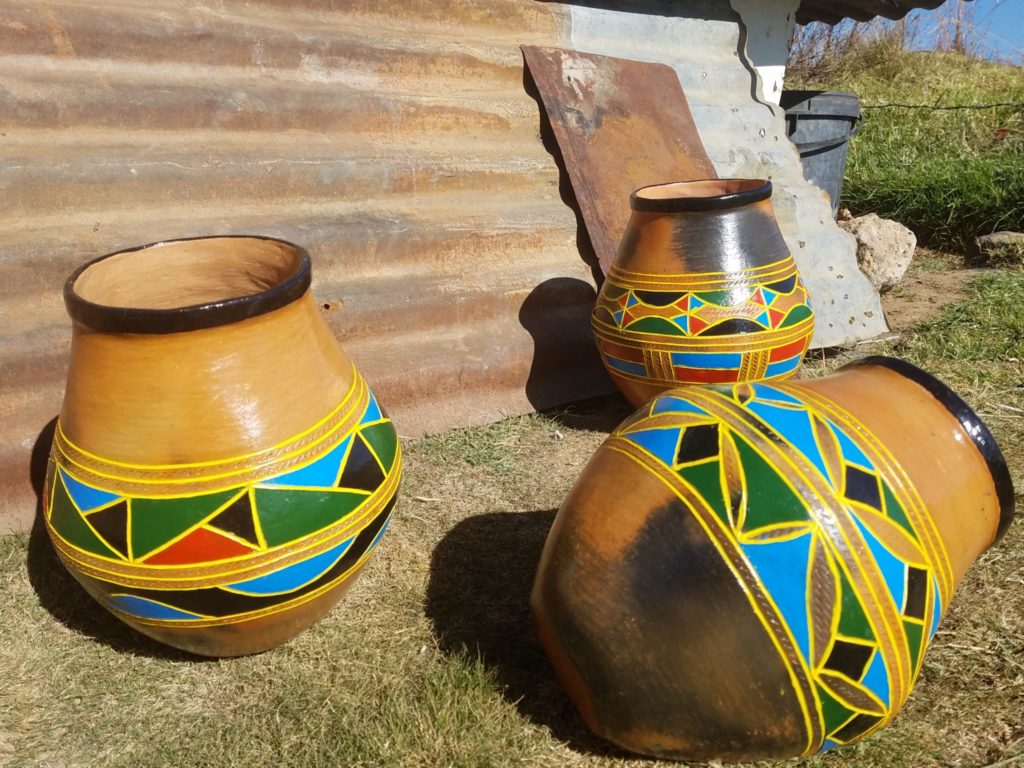
The students also had a chance to work with the teachers during a training at the University of the Free State. They participated in a two-day workshop with local middle school teachers and a nonprofit, Africa Meets Africa, overseen by Helene Smuts. Riep has been involved with this project for 8-10 years; they develop curriculum for rural schools and use art to teach math, geometry, and algebra.
Lewis presented a module to the South African teachers about how visual arts and local art can be used to teach higher-level concepts. Lewis is developing the curriculum alongside Riep, Fahey, and Smuts. “The curriculum teaches content through cultural art forms,” says Lewis. “We look at radial symmetry and organic designs. And we brainstorm shapes before we get to the actual mural.”
Rebuilding a museum
Outside of the art education, the CSU group worked closely with local Batlôkwa ba Mota king [Morena in the Sesotho language], Morena M.D. Mota, and his council to restore a mountaintop museum that had been vandalized in 2009.
The structure was constructed in 1974 to commemorate the 100th year of the arrival of Koos Mota and the Batlôkwa to the area. “When Koos Mota (a Batlokwa king and ancestor of the current king) arrived to this region with his people in 1874, there was a great draught, making food very scarce and causing distress to the community. (Koos relocated to this region after making a treaty with the Afrikaans-speaking Free State government in order to obtain rights to the land.) After offering prayers, the Batlôkwa discovered storage baskets full of grain, which sustained the newly arrived settlers. The prayers also brought life-giving rains, which fed the dry land and brought new life to the region,” says Riep.
“This event is remembered each year at the Mokete wa Sefika celebration, which takes place at this very site in the district of QwaQwa called Tseseng, which is named after these life-giving grain baskets.”
Prior to the trip, a few graphic design students from CSU created banners that documented the people’s cultural history and art practices. They presented the banners to the council, which were well received.
“We met with the king’s council several times before getting started,” says Natrasevschi. “They have processes and formalities and specific ways of doing things. We wanted to honor their ways of working.”
In addition to bringing the banners and some custom-cut glass for installation, the CSU group did rehabilitation on the site: painting, concrete work, cleaning up debris, and weeding. The king’s council received the gifts and will work on security before installing everything and asking community members to donate their art to display. “We restored the area, refurbished the building, and communicated our plans for the future of the building to the council,” says Berman.
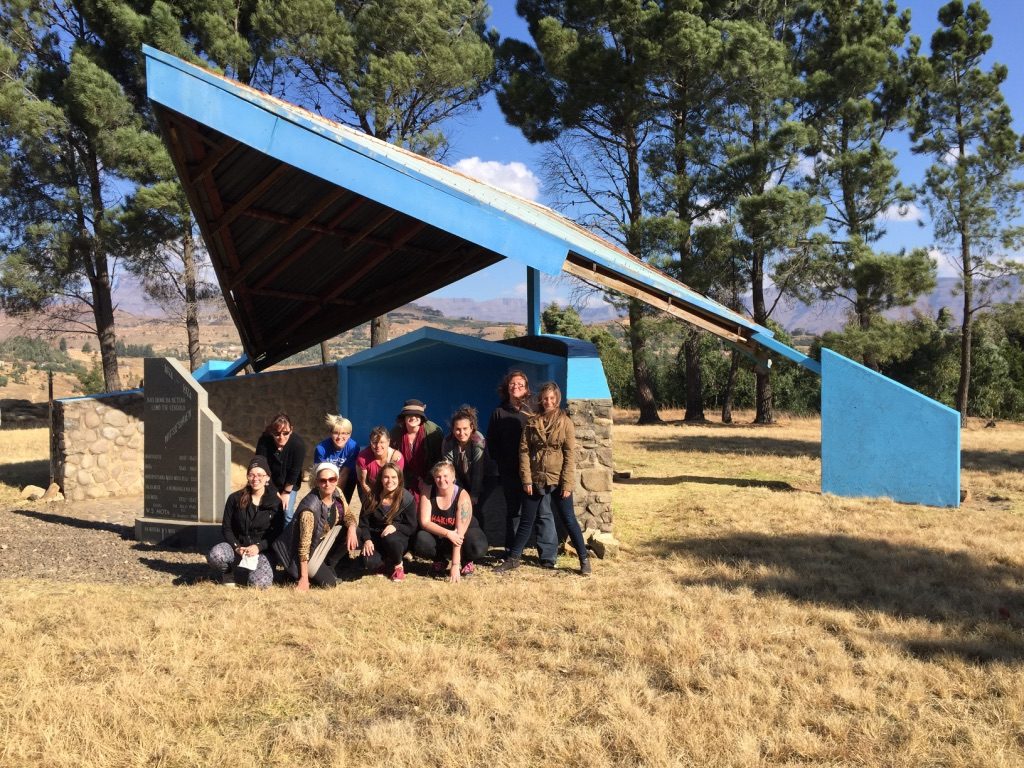
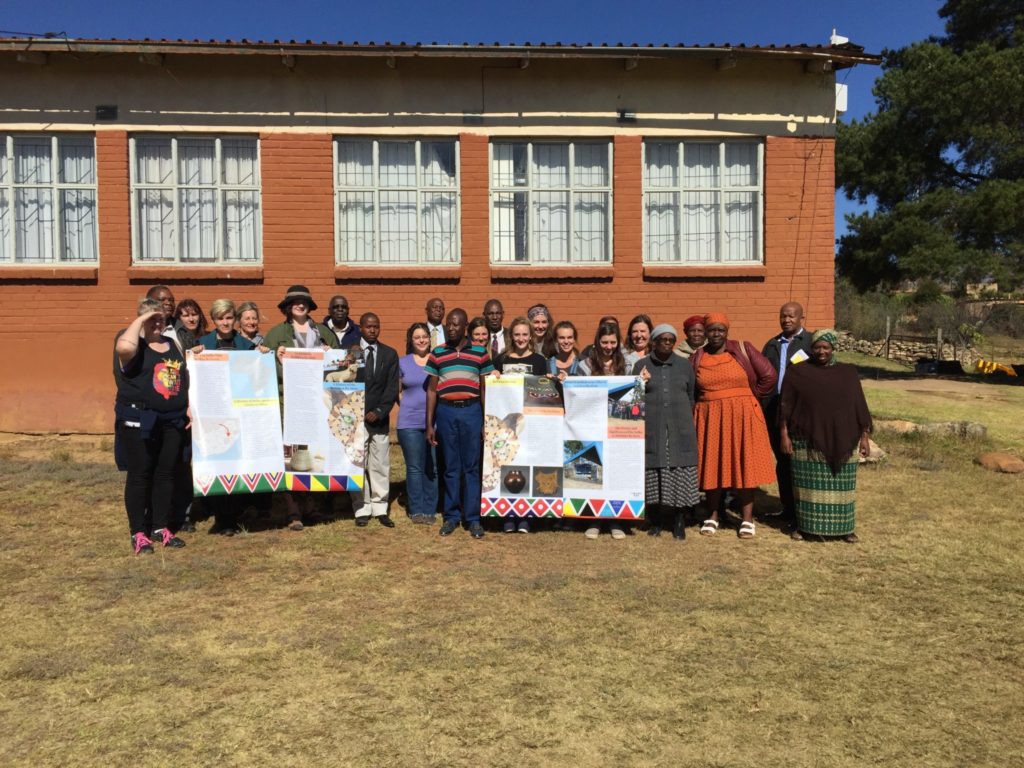
Meeting visual artists
Finally, the students met several professional artists: Willem Boshoff, a conceptual artist in Johannesburg talked to the group about his artwork, his approach, and a career as an artist in this day and age; and Esther Mahlangu, who taught the group Ndebele-style painting. “Hearing him [Boshoff] talk about his practice was inspirational,” says Berman.
Ultimately, the trip is one of both giving and receiving, learning and teaching. With both groups – CSU and South Africa – benefiting.
“I think of myself as an ambassador for CSU and an ambassador for America,” says Riep. “I spent several intense years with this community. I don’t want to just take from them [for dissertation], I want to do something and give back.”
Funding for this trip is provided by the attending students’ tuition. Additional funds for reconstructing the museum, for the art supplies for the elementary students, and for the university workshop were provided by the College of Liberal Arts, the Department of Art and Art History, and from a TILT service-learning mini grant.
What’s Next
The group also spent a day with Petrus Mahlangu, the curator of the Kghodwana Cultural Village and Museum in Mpumalanga province. Riep is currently developing an exhibition on Women Artists in Africa, which will feature Esther Mahlangu, Lenky Nhlapo (a potter with whom the group worked in Qwaqwa), and several Kenyan artists. Both Mahlangu and Helene Smuts are helping develop the show, which will open at the Gregory Allicar Museum of Art in 2018. Museum director Dr. Lynn Boland will produce and send the exhibition to the Kghodwana Cultural Village and Museum where it will be on display simultaneously, a notable collaboration/museum exchange. “We’re delighted to have this kind of collaboration,” says Boland. “It’s a wonderful opportunity to participate in a two-way global dialogue, something that CSU has already done so much of.”
Angela Natraveschi
Senior, BFA – painting, BA in art education, minor in English
The experience:
It was meaningful to get a first-hand perspective and see these things in person (rather than a textbook)
What I learned:
I’m more critical now. The art education was so powerful with those students in South Africa and working for an arts camp here in Colorado it was interesting to compare these students’ relationship to arts education – where they have access to everything – to the students having a completely new experience.
The impact:
I developed stronger relationships with everyone on the trip. What surprised me was how much stronger my relationship with my professors is.
Jenna Lewis
Alumna, BFA – printmaking, BA in art education
Teacher at Horizon High School
The experience:
We got to talk to the [South African] teachers, see how the school system works, see the structure and the politics. Teachers there don’t have the freedom to make their own curriculum. They teach by the book instead of through experiential learning.
What I learned:
Africa is portrayed in a certain way in the media. You don’t know about the complex cultures throughout the continent. Even within the one country there is a lot of diversity.
The impact:
Because of the trip I teach a lot more empathy. You can learn a lot about people by listening to their experiences and looking at their art. Art is an opportunity to step into somebody else’s world.
Anna Berman
Junior, BA in art with a concentration in graphic design, minor in Business
The experience:
Everything was so incredible: going into each classroom, meeting the kids and hearing their stories, learning what it’s like to grow up there, and have them so eager to learn art and paint for us.
What I learned:
I learned to appreciate everything that I have and not take it for granted.
The impact:
When I make art, I look at a lot of art history and take themes from the past and make modern representations of them. I like the idea of putting art into every day life.
Photos were provided by Angela Natrasevschi, Jenna Lewis, Anna Berman, and Dave Riep. Video provided by Angela Natrasevschi.